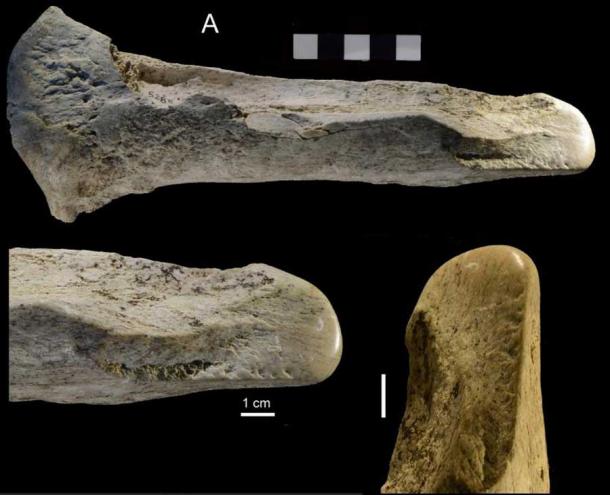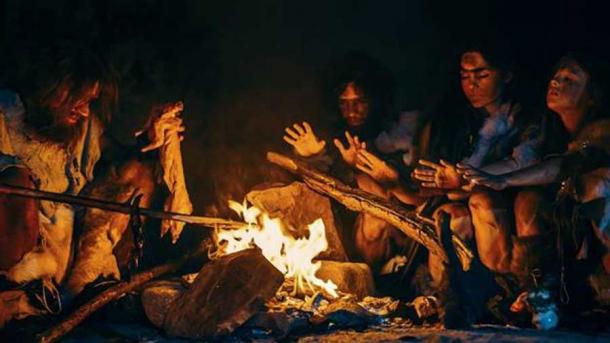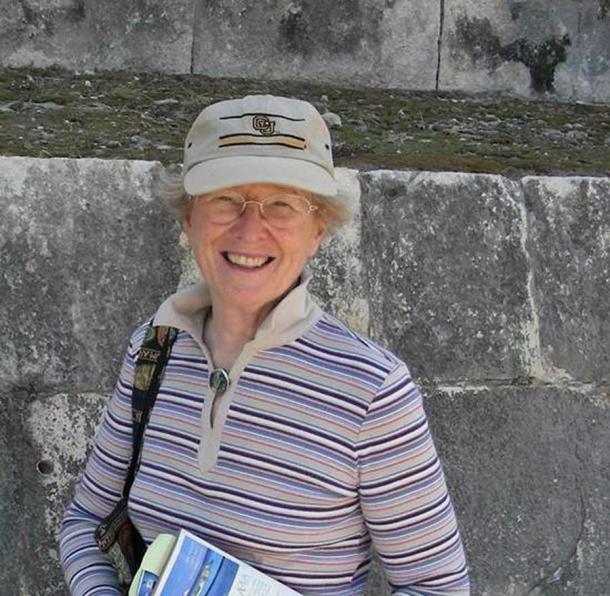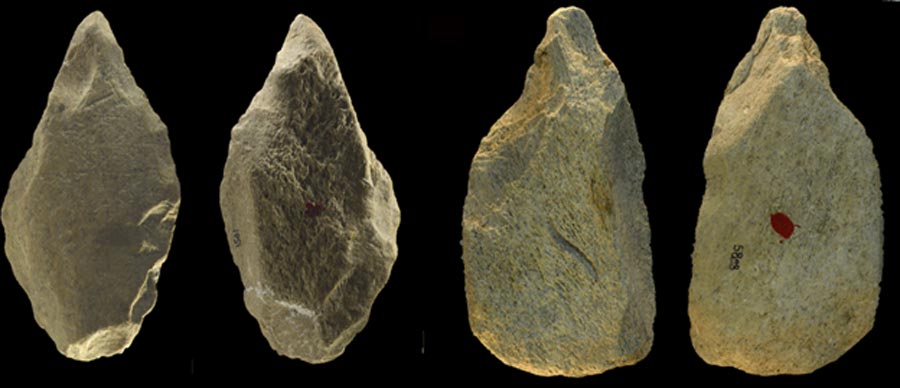Archaic Hominin Made Elephant Bone Tools 400,000 Years Ago, Study Finds
Archaeologists examining artifacts collected from a site in Italy found that an archaic hominin species had made elephant bone tools, including pointed tools for carving meat and wedge-shaped tools for cracking open large femurs and other long bones, 400,000 years ago. This is hundreds of thousands of years before such a thing had been considered possible. These innovative toolmakers lived in the Middle Pleistocene epoch, at least 100,000 years before modern man first appeared in far-off Africa.

Fig 12 from the study showing unifaces and pointed tools made with elephant bones found at the Castel di Guido site, Rome, Italy. A-C: unifaces with a side scraper edge; D: pointed wedge (base is battered). E-F: pointed tools on bovid diaphysis fragments, catalogue numbers 326, 2807. G-H: pointed tools. (Plos One)
A Total of 98 Flaked Elephant Bone Tools Were Found
This astonishing discovery was made by a team of researchers from Italy, France, South Africa, and the United States, headed by University of Colorado-Boulder archaeology professor Paola Villa. They studied elephant bone tools excavated between 1979 to 1991 from the Castel di Guido site near Rome, and in the process revealed fascinating details about the craftsmanship involved in making these bone tools.
Writing about their findings in the Plos One journal study the archaeologists note that the 98 verified elephant bone tools found at Castel di Guido represent “the highest number of flaked bone tools made by pre-modern hominids published so far.” Acknowledging the advanced techniques used to make these rare tools, the archaeologists credit the ancient toolmakers with completing “the first step in the process of increasing complexity of bone technology.”
- Human Bone Daggers in New Guinea were Used to Strike the Fatal Wound
- Paleolithic Bone Tools Discovered in Chinese Cave Are Some of the Oldest in the World
In the Middle Pleistocene, there was a stream running through Castel di Guido. An extinct Eurasian straight-tusked elephant species used the stream as a source of fresh water, and archaic humans were drawn to the area as well and likely settled very nearby. Occasionally one of these 13-foot (four-meter) tall elephants would die of natural causes, and the local hominins would then scavenge the massive remains for hides, meat, and bones.
These elephant bones were strong and sturdy, which made them suitable for use as tools. They were often broken randomly into pieces and used as they were. But sometimes toolmakers would customize the bones by using rocks or other pieces of bone to break off flakes or chunks, carefully working the bone’s shape until it was just as they wanted.

Not all the bone tools found at the Castel de Guido site were made from elephant bones. Fig 14 from the study shows the polished tip of an aurochs (a species wild cattle) bone, compared with an ancient horse bone tool from Germany (bottom right). These tools are known as lissoirs, which ancient humans used to treat leather with. (Plos One)
In this case, the tools were modified in ways that were unusual 400,000 years ago.
“We see other sites with bone tools at this time,” Professor Paola Villa, who is also the adjoint curator at the CU Boulder Museum of Natural History, explained in a University of Colorado-Boulder press release. “But there isn’t this variety of well-defined shapes.”
“At Castel di Guido, humans were breaking the long bones of the elephants in a standardized manner and producing standardized blanks to make bone tools,” Villa continued. “This kind of aptitude didn’t become common until much later.”
“Much later” in this instance means up to 100,000 years later!
“Until recently the generally accepted idea was that early bone technology was essentially immediate and expedient, based on single-stage operations, using available bone fragments of large to medium size animals,” Villa and her colleagues wrote in their Plos One article. “Only Upper Paleolithic bone tools would involve several stages of manufacture with clear evidence of primary flaking or breaking of bone to produce the kind of fragments required for different kinds of tools.”
The discovery of the work of the Castel di Guido toolmakers has shattered the previous timeline. It’s left archaeologists questioning everything they thought they new about the development of human toolmaking practices on the Eurasian continent. It seems that the process was not linear and that it progressed much faster in at least one small part of the world.

Did the Neanderthals Live at Castel di Guido? The lead author of the study, archaeology professor Paola Villa (Colorado University Boulder), believes the Neanderthals as the likely makers of these extremely old elephant bone tools. (Gorodenkoff / Adobe Stock)
Did Neanderthals or Homo Erectus Live at Castel di Guido?
So far, archaeologists working at Castel di Guido have failed to find the fossilized remains of ancient humans. Such a discovery could have helped them to pin down the true identity of the ancient toolmakers.
Nevertheless, Paola Villa has a theory about who they might have been. She believes they were Neanderthals, the long-extinct cousin of modern humans who were in Eurasia during the Middle Pleistocene.
“About 400,000 years ago, you start to see the habitual use of fire, and it’s the beginning of the Neanderthal lineage,” Villa explained. “This is a very important period for Castel di Guido.”
It is hardly surprising that Villa would identify the Neanderthals as the likely toolmakers. She is considered one of the world’s top experts on the Neanderthals, and her contributions have helped reverse previous negative judgments about their intellectual capacities and their level of cultural and social development.

Another possible candidate for who made these bone tools would be Homo erectus. (York / Adobe Stock)
Another possible toolmaking candidate would be Homo erectus. This ancient ancestor of Homo sapiens (modern man) first emerged more than two million years ago, and by 400,000 years ago they were living throughout Europe and Asia. They were the first hominin species to demonstrate impressive toolmaking skills, although they would have had to have been more advanced than believed to have produced the elephant bone tools found in Italy.
Whoever the manufacturers were, the tools they created were impressively diverse. The crafted objects found at Castel di Guido included tools with sharp points, which could have been used to cut meat. There were also bone wedges that could have been used to splinter large, long, and heavy elephant bones into smaller pieces.
One tool was especially sophisticated. Long and smooth at one end, this object was identified as a lissoir, which ancient humans used to treat leather. All previously discovered lissoirs have been dated to 300,000 ago or later, and of all the tools discovered at Castel di Guido this is the one that pushes the archaeological record back the furthest.
Interestingly, this particular tool was not made from an elephant bone. It was shaped from a wild cattle bone instead. The ancient toolmakers at Castel di Guido were obviously happy to use elephant bones whenever possible, but they didn’t rely on them exclusively as a source of raw material.

Professor Paola Villa lead author of the study doesn’t think the Castel di Guido hominins who made the elephant bone tools were unusually smart, compared to Neanderthals living in other areas. (Leakey Foundation)
Innovation Determined by Circumstance
Paola Villa doesn’t think the Castel di Guido hominins were unusually smart, compared to Neanderthals living in other areas. She believes they used the resources that were available to them as best they could, and because they didn’t have access to large pieces of flint at their location they turned to elephant bones as an alternative. Elephant bones weren’t so easy to find elsewhere, so other hominin groups wouldn’t have had the opportunity to explore the tool manufacturing possibilities so thoroughly.
- 1.4-Million-Year-Old Bone Hand Axe Revises Toolmaking Timeline
- Stone Age Peoples Made Bone Arrowheads - From Human Bones!
“At other sites 400,000 years ago, people were just using whatever bone fragments they had available,” Villa noted. “The Castel di Guido people had cognitive intellects that allowed them to produce complex bone technology. At other assemblages, there were enough bones for people to make a few pieces, but not enough to begin a standardized and systematic production of bone tools.”
The Castel di Guido hominins were pioneers. But they remained relatively isolated, with limited chances to pass on what they’d learned to others. Consequently, the techniques they perfected would need to be rediscovered independently by others, at various times in the future.
Top image: A closeup of a few of the 98 verified elephant bone tools found in Rome, Italy, which have been attributed to an archaic hominin species based on a recent study published in the Plos One journal. Source: Plos One
By Nathan Falde




















Comments
Pete Wagner. Domesticated elephants 400,000 years ago? Totally out of the question. If not scavenged, then hunted.
Crasslee
The common name “elephant” gets tossed around rather loosely sometimes. Were the bones from the genus Elephas? Or were they Mammuthus ot Mamut?